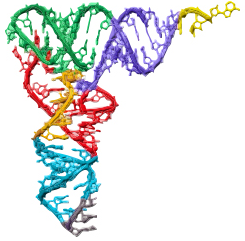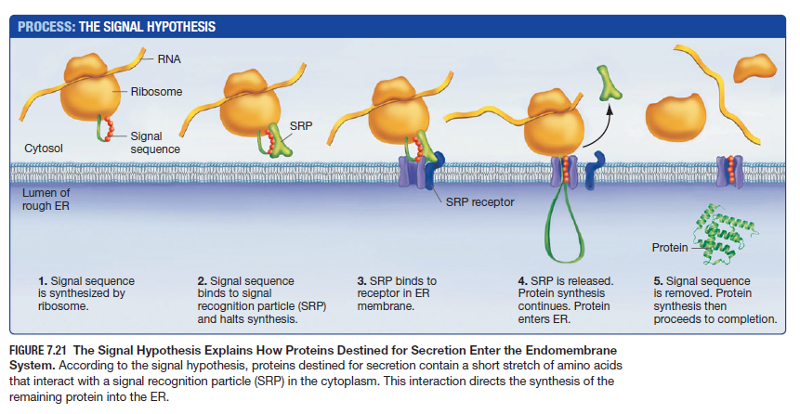

- RIBOSOMES AND PROTEIN SYNTHESIS SEQUENCE OF EVENTS SKIN
- RIBOSOMES AND PROTEIN SYNTHESIS SEQUENCE OF EVENTS CODE
Because the DNA code is in a different part of the cell from the ribosomes, a messenger molecule is required to carry the code from the nucleus to the cytoplasm. And what's wrong with that? Well, the DNA remember is in the form of large chromosomes inside the nucleus. Ribosomes catalyse the reactions of protein synthesis and if you can remember back to the first topic you'll know that ribosomes are found in the cytoplasm. In order to produce a protein you need ribosomes.

So, the sequence of bases in DNA codes for the sequence of amino acids of a protein. The sequence of basis on the DNA molecule is what directs the sequence of amino acids in the protein molecule - that's how it all links together! If you click on the the green "glutamic acid to a valine" link on Proteopedia it'll zoom in and show you the site of the mutation.īut what decides the order of the amino acids in the protein molecule? Well, this is when we come back to DNA. So, what this means is that if just one amino acid is changed to another it can change the protein which can result in a disease sickle-cell anaemia in this case. Glutamic acid and valine are amino acids. This hemoglobin variant is termed 'hemoglobin S' (2hbs)." It results from a mutation of the sixth residue in the β hemoglobin monomer from glutamic acid to a valine. "Perhaps the most well-known disease caused by a mutation in the hemoglobin protein is sickle-cell anemia. If you look at the protein Haemoglobin on Proteopedia you'll notice in the last paragraph of the introduction it says Īn accidental change in one of the bases in the DNA code can have a dramatic effect on the protein produced if it changes the sequence of the amino acids. So the following two sequences of amino acids would ultimately result in proteins which have very different structures, and therefore very different functions also.

There are only twenty naturally occurring amino acids and the order the amino acids are joined together will determine which protein is produced. These chains can be hundreds or thousands of amino acids long.

Proteins consist of long chains of a repeating chemical unit called amino acids. Amazingly, like all proteins, these two proteins are made in exactly the same way using the same twenty ingredients. Clearly these are two very different proteins with very different functions which arise from their very different structures.
RIBOSOMES AND PROTEIN SYNTHESIS SEQUENCE OF EVENTS SKIN
Keratin is an important structural protein in your skin and is also the key protein in your hair and nails. Another protein you might have heard of is keratin. You'll know that there are different types of proteins for example, such as the protein haemoglobin in your red blood cells which not only makes your blood red, but more importantly binds to oxygen in your lungs and carries it to all the tissues in your body. We'll learn a lot about proteins in our next topic, but you already know something about proteins. So that's what DNA looks like, but what does it actually do? We've already mentioned that DNA codes for the production of proteins but how does this actually work? Before starting to explain this you need to know a little bit about the structure of proteins. There are many resources online to explore the structure of DNA further such as this one, you can also find out how this structure was discovered on YouTube. So, a short section of a molecule of DNA could be represented in the diagram below. Two of these are always the same, but one of these - the base - can come in four different forms. The repeating unit which makes up a molecule of DNA consists of three structures. It is a chemical molecule found in all cells which consists of very long chains of repeating components. In the next topic we'll learn how these proteins go on to perform many crucial functions in cells.ĭNA stands for D eoxyribo n ucleic A cid. But what is DNA, and what does it do? In this topic we'll discuss the structure of DNA and how it codes for the manufacture of proteins by cells. We've already learnt that DNA is located in the nucleus in the form of chromosomes and these replicate during mitosis to ensure daughter cells have the same quantity of DNA as the mother cell. Messenger RNA (mRNA) is a molecule which carries a copy of the code from the DNA, in the nucleus, to a ribosome, where the protein is assembled from amino acids. The base sequence determines amino acid sequence in protein. The four bases A, T, C and G make up the genetic code. ĭNA carries the genetic information for making proteins. Structure of DNA: double-stranded helix held by complementary base pairs.


 0 kommentar(er)
0 kommentar(er)
